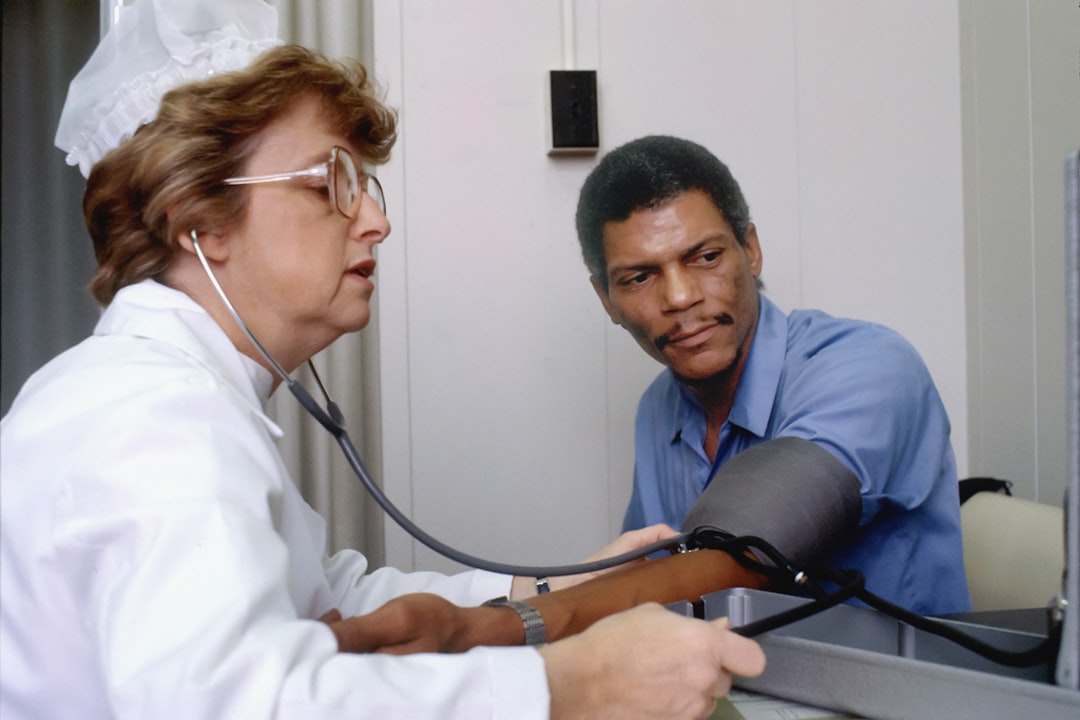Breast cancer (female)
Learn about breast cancer in women, including symptoms, risk factors, screening, and treatment options. Stay informed for early detection and care.
Related Products
Breast Cancer: A Global Health Challenge
Breast cancer is a critical health concern primarily affecting women, ranking as the most common cancer among females worldwide. This disease, characterized by uncontrolled abnormal cell growth in breast tissue, significantly impacts individuals, families, and healthcare systems globally.
Prevalence and Statistics
- Accounts for approximately 30% of new female cancer cases annually in the United States
- Claimed 670,000 lives globally in 2022
- Ranks as the most frequent cancer among women in 157 out of 185 countries
- U.S. women have a lifetime risk of about 13%, or a 1 in 8 chance
- Median diagnosis age is 62
Risk Factors
- Being female
- Increasing age
- Obesity
- Excessive alcohol consumption
- Family history
- Radiation exposure
- Reproductive history
- Tobacco use
- Postmenopausal hormone therapy
Diagnosis and Treatment
Diagnosis involves:
- Physical examinations
- Imaging tests (mammograms, ultrasounds, MRIs)
- Biopsies
Treatment strategies include:
- Surgery
- Radiation therapy
- Medications (hormone therapy, chemotherapy, targeted drug therapies)
Progress and Hope
- Breast cancer death rates have declined steadily since 1989, with a 42% overall reduction through 2021
- Attributed to earlier detection and treatment advancements
Prevention and Screening
- American Cancer Society provides age-specific mammogram screening recommendations
- Lifestyle modifications can help reduce risk:
- Maintaining a healthy weight
- Staying physically active
- Limiting alcohol consumption
Conclusion
While breast cancer remains a significant health challenge, ongoing advancements in detection, treatment, and prevention offer reasons for optimism. Continued research, public health initiatives, and individual awareness are crucial in battling this pervasive disease, aiming to reduce its incidence and improve outcomes for those affected.
- Breast Cancer Facts and Statistics 2024. (2024, May 22). Retrieved from https://www.breastcancer.org/facts-statistics
- Breast Cancer Statistics. (2024, January 17). Retrieved from https://www.cancer.org/cancer/types/breast-cancer/about/how-common-is-breast-cancer.html
- Screening for Breast Cancer. (n.d.). Retrieved from https://www.ncbi.nlm.nih.gov/books/NBK343825/
- Breast cancer - World Health Organization (WHO). (2024, March 13). Retrieved from https://www.who.int/news-room/fact-sheets/detail/breast-cancer
- Breast Cancer: Diagnosis and Treatment. (n.d.). Retrieved from https://www.ncbi.nlm.nih.gov/books/NBK61908/
🕓 Last Updated: 7/4/2024 11:15:40 PM
Breast Cancer Symptoms and Diagnosis
Early detection of breast cancer often leads to better outcomes. Understanding the symptoms and diagnostic process is crucial for effective management of this disease.
Common Symptoms
- Lump in the breast or armpit
- Skin changes:
- Redness
- Dimpling
- Orange-peel texture
- Nipple changes:
- Flattening
- Inversion
- Scaliness
- Alterations in breast size, shape, or appearance
- Changes in skin color
- Peeling, scaling, crusting, or flaking of breast skin
Note: While these symptoms can indicate other conditions, they always warrant professional evaluation.
Diagnostic Process
Clinical breast exam
- Visual and manual examination by a healthcare professional
Imaging tests
- Mammograms: X-rays to detect breast tissue abnormalities
- Ultrasound and MRI: Provide additional information about suspicious areas
Biopsy
- Microscopic examination of tissue samples to confirm cancer presence and characteristics
Important Considerations
- Diagnostic tools are effective but not infallible
- False negatives and false positives can occur
- Regular screenings and prompt follow-up on concerning symptoms are essential
Screening Recommendations
American Cancer Society guidelines for women of average risk:
- Begin annual mammograms at age 45 (option to start at 40)
- Women 55 and older can switch to biennial screening or continue annually
Conclusion
Early detection through symptom awareness and screening adherence significantly improves breast cancer prognosis. Report any unusual breast changes to a healthcare provider promptly.
- Breast cancer - Diagnosis and treatment - Mayo Clinic. (2024, February 10). Retrieved from https://www.mayoclinic.org/diseases-conditions/breast-cancer/diagnosis-treatment/drc-20352475
- Breast cancer guide to diagnosis and treatment (Beyond the Basics). (2023, September 7). Retrieved from https://www.uptodate.com/contents/breast-cancer-guide-to-diagnosis-and-treatment-beyond-the-basics
- Breast cancer symptoms you shouldn't ignore. (n.d.). Retrieved from https://www.mdanderson.org/publications/focused-on-health/breast-cancer-symptoms-you-shouldn-t-ignore.h10-1592991.html
- Breast cancer - Symptoms and causes - Mayo Clinic. (2024, February 10). Retrieved from https://www.mayoclinic.org/diseases-conditions/breast-cancer/symptoms-causes/syc-20352470
- ACS Breast Cancer Screening Guidelines - American Cancer Society. (2023, December 19). Retrieved from https://www.cancer.org/cancer/types/breast-cancer/screening-tests-and-early-detection/american-cancer-society-recommendations-for-the-early-detection-of-breast-cancer.html
🕓 Last Updated: 7/4/2024 11:15:40 PM
Causes of Breast Cancer
Breast cancer development involves a complex interplay of genetic, hormonal, environmental, and lifestyle factors. Understanding these causes is crucial for identifying high-risk individuals and developing effective prevention strategies.
Genetic Factors
- Mutations in BRCA1 and BRCA2 genes account for 5-10% of cases
- These mutations substantially increase breast cancer risk
Hormonal Influences
- Estrogen and progesterone exposure play a significant role
- Higher risk associated with:
- Early menstruation
- Late menopause
- Hormone replacement therapy
Reproductive History
- Higher risk factors include:
- Late first full-term pregnancy
- No full-term pregnancies
- Not breastfeeding
- Pregnancy and breastfeeding offer protective effects on breast tissue
Lifestyle Factors
- Increased risk associated with:
- Obesity
- Physical inactivity
- Alcohol consumption
- Risk reduction strategies:
- Maintaining a healthy weight
- Regular exercise
- Limiting alcohol intake
Environmental Factors
- Ionizing radiation exposure, particularly to the chest before age 30
- Relevant for women who've undergone chest area radiation therapy for other cancers
Family History
- Having a first-degree relative with breast cancer approximately doubles a woman's risk
- May be due to shared genetic or environmental factors
Breast Density
- Women with dense breast tissue have higher risk
- Dense breast tissue can make mammogram detection more challenging
Conclusion
While these risk factors don't guarantee breast cancer development, understanding them can guide screening and prevention strategies. This knowledge potentially leads to earlier detection and better outcomes. It's important to discuss individual risk factors with healthcare providers to develop personalized screening and prevention plans.
- Breast Cancer Risk Factors You Cannot Change. (2021, December 16). Retrieved from https://www.cancer.org/cancer/types/breast-cancer/risk-and-prevention/breast-cancer-risk-factors-you-cannot-change.html
- Breast Cancer Risk Factors - CDC. (2024, March 11). Retrieved from https://www.cdc.gov/breast-cancer/risk-factors/index.html
- Genetics as a Risk Factor for Breast Cancer - Breastcancer.org. (2024, March 9). Retrieved from https://www.breastcancer.org/risk/risk-factors/genetics
- Breast cancer - Symptoms and causes - Mayo Clinic. (2024, February 10). Retrieved from https://www.mayoclinic.org/diseases-conditions/breast-cancer/symptoms-causes/syc-20352470
🕓 Last Updated: 7/4/2024 11:15:40 PM
Breast Cancer Prevention Strategies
Prevention plays a crucial role in reducing breast cancer risk. While some risk factors are unchangeable, adopting lifestyle modifications and making informed choices can significantly lower disease likelihood.
Key Preventive Measures
Physical Activity
- Engage in moderate-intensity exercise for at least 20 minutes daily
- Activities include brisk walking, cycling, or swimming
- Benefits: Maintains healthy weight, influences hormone levels and immune function
Balanced Diet
- Consume a diet rich in fruits, vegetables, and whole grains
- Consider the Mediterranean diet, emphasizing plant-based foods and healthy fats
- High antioxidant and anti-inflammatory content linked to reduced breast cancer risk
Healthy Weight Maintenance
- Combine balanced diet with regular exercise
- Reduces excess body fat, which can lead to higher estrogen levels
Limited Hormone Therapy
- Long-term use of hormone replacement therapy after menopause can increase risk
- If necessary, use lowest effective dose for shortest time possible
Alcohol Moderation
- Even moderate alcohol intake can increase risk
- Limiting or avoiding alcohol consumption helps reduce breast cancer risk
Breastfeeding
- Prolonged breastfeeding has a protective effect against breast cancer
- Possibly due to breast tissue changes and reduced lifetime estrogen exposure
Risk-Reducing Surgeries
- For high-risk women, consider prophylactic mastectomy or oophorectomy
- Requires careful consultation with healthcare providers
Important Considerations
- These measures can significantly reduce risk but can't eliminate it entirely
- Regular screening and early detection remain crucial
- Follow recommended guidelines and consult healthcare providers about individual risk factors and appropriate prevention strategies
By incorporating these preventive measures, women can proactively reduce their breast cancer risk, potentially leading to better overall health outcomes.
- Risk Factors - National Breast Cancer Foundation. (n.d.). Retrieved from https://www.nationalbreastcancer.org/breast-cancer-risk-factors/
- Breast Cancer Prevention - NCI. (2023, June 26). Retrieved from https://www.cancer.gov/types/breast/patient/breast-prevention-pdq
- Breast Cancer Early Detection and Diagnosis. (n.d.). Retrieved from https://www.cancer.org/cancer/types/breast-cancer/screening-tests-and-early-detection.html
- Breast cancer prevention: How to reduce your risk - Mayo Clinic. (2023, December 1). Retrieved from https://www.mayoclinic.org/healthy-lifestyle/womens-health/in-depth/breast-cancer-prevention/art-20044676
- Breast Cancer Risk Factors - Breastcancer.org. (n.d.). Retrieved from https://www.breastcancer.org/risk/risk-factors
🕓 Last Updated: 7/4/2024 11:15:40 PM
Complementary Approaches for Breast Cancer Management
While professional medical treatment is essential for breast cancer, certain complementary approaches may help manage symptoms and improve overall well-being. Always discuss these remedies with healthcare providers before implementation.
Supportive Dietary Changes
- Consume a balanced diet rich in fruits, vegetables, and whole grains
- Limit processed foods and smoked or charred meats
Complementary Therapies
Antioxidant Supplements
- May include Vitamins C and E, beta carotene, and co-enzyme Q10
- Potential protection against free radical damage
- Consult healthcare providers before use
Herbal Remedies
- Examples: Echinacea, ginseng, and ginkgo biloba
- Might boost immunity and alleviate symptoms
- Effectiveness and safety not well-established; consult healthcare providers
Mind-Body Practices
- Meditation, yoga, and tai chi
- Can help manage stress, anxiety, and pain
Massage Therapy
- May alleviate pain, fatigue, and anxiety
- Should be performed by trained practitioners
Acupuncture
- Could help relieve symptoms like hot flashes, nausea, and pain
Biofeedback Training
- Helps manage physical symptoms like muscle tension and heart rate
Important Considerations
- These complementary therapies are not substitutes for conventional medical treatment
- Use in conjunction with standard cancer treatments
- Implement under healthcare team guidance
- Each person's breast cancer experience is unique
- Work closely with your healthcare team to develop a comprehensive treatment plan
Remember, these approaches should supplement, not replace, professional medical care. Always consult with your healthcare providers to ensure that any complementary therapies align with your overall treatment plan and individual needs.
- Munazza Shareef. (2016, May 5). Natural cures for breast cancer treatment. PMC - NCBI. Retrieved from https://www.ncbi.nlm.nih.gov/pmc/articles/PMC4881189/
- Alternative Treatments for Breast Cancer: What Works? - Healthline. (n.d.). Retrieved from https://www.healthline.com/health/breast-cancer/alternative-treatments-for-breast-cancer
- Complementary & Alternative Treatment for Breast Cancer - WebMD. (2022, March 20). Retrieved from https://www.webmd.com/breast-cancer/complementary-and-alternative-treatments-for-breast-cancer
- Types of complementary therapies | Breast Cancer Now. (n.d.). Retrieved from https://breastcancernow.org/about-breast-cancer/life-after-treatment/complementary-therapies/types-of-complementary-therapies/
- Natural treatment for breast cancer: Complementary therapy options. (2019, July 1). Retrieved from https://www.medicalnewstoday.com/articles/325625
🕓 Last Updated: 7/4/2024 11:15:40 PM
Alternative Medicine Approaches for Breast Cancer
Alternative medicine approaches have gained attention as complementary strategies to conventional breast cancer treatments. These methods aim to alleviate symptoms, manage side effects, and improve overall well-being. However, they should be used in conjunction with standard medical care, not as replacements, and always under healthcare professional guidance.
Key Alternative Approaches
Acupuncture
- May help reduce pain, nausea, and fatigue
Massage Therapy
- Can offer relief from stress, anxiety, and pain
Tai Chi and Qi Gong
- Gentle movements combined with breathing exercises and meditation
- May reduce stress and improve mobility
Biofeedback
- Teaches control of certain bodily processes to manage symptoms and treatment side effects
Reiki
- Energy-based healing practice that may promote relaxation
- Scientific evidence is limited
Herbal Remedies
- Potential immune-stimulating and anti-tumor properties
- Approach with caution due to possible interactions with conventional treatments
Mind-Body Practices
- Meditation and yoga can help manage psychological and emotional challenges
Dietary Changes
- A balanced diet rich in fruits, vegetables, and whole grains can support overall health
Antioxidant Supplements
- Controversial role in breast cancer treatment
- Discuss with healthcare providers before use
Important Considerations
- Effectiveness and safety of these approaches are still being researched
- Always discuss alternative options with your healthcare team
- Ensure alternative treatments don't interfere with primary treatments
- Develop a comprehensive care plan addressing individual needs and circumstances
While these alternative approaches may offer benefits, they should complement, not replace, conventional medical treatments. Open communication with your healthcare team is essential to ensure safe and effective integration of alternative methods into your overall breast cancer treatment plan.
- Alternative cancer treatments: 11 options to consider - Mayo Clinic. (n.d.). Retrieved from https://www.mayoclinic.org/tests-procedures/cancer-treatment/in-depth/cancer-treatment/art-20047246
- Natural treatment for breast cancer: Complementary therapy options. (2019, July 1). Retrieved from https://www.medicalnewstoday.com/articles/325625
- Natural cures for breast cancer treatment - PMC - NCBI. (2016, May 5). Retrieved from https://www.ncbi.nlm.nih.gov/pmc/articles/PMC4881189/
- Alternative Treatments for Breast Cancer: What Works? - Healthline. (n.d.). Retrieved from https://www.healthline.com/health/breast-cancer/alternative-treatments-for-breast-cancer
- Complementary & Alternative Treatment for Breast Cancer - WebMD. (2022, March 20). Retrieved from https://www.webmd.com/breast-cancer/complementary-and-alternative-treatments-for-breast-cancer
🕓 Last Updated: 7/4/2024 11:15:40 PM
Related Products
The views and opinions expressed on Nutritionaly.com are for informational purposes only and do not necessarily reflect the official policies or positions of Nutritionaly.com. While we strive to provide valuable insights and educational content, the information on this website is not intended to be taken as professional medical advice or to diagnose, treat, or prevent any health condition. Always consult with a qualified healthcare provider before making any health-related decisions or starting any new treatment. Any reliance placed on such information is strictly at the reader’s own risk. Nutritionaly.com is not liable for the accuracy of information from third parties featured on our website. We do not endorse these external opinions, products, or services. Content may become outdated, and images are for illustrative purposes only.










